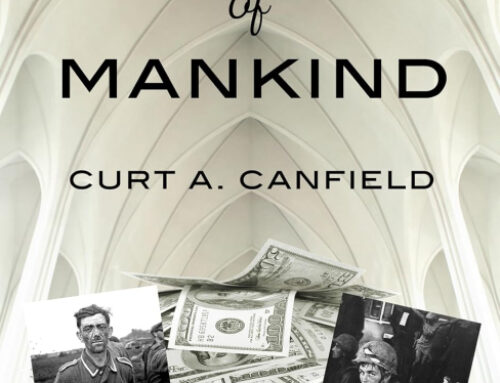
This novel has a great deal going for it. The story is captivating. I kept wondering if Eric would be able to come back from his self-imposed exile to face the consequences of the accident. I found the characters sympathetic, and I really cared what happened to Eric. Saltsman, himself a former competitive long-distance runner, knows how runners feel about winning and losing, how races are run, and how a runner trains for the longer races. I enjoyed learning about the inner world of the long distance runner. However, though Saltsman has promise as a writer, Agony Hill should have been held back from publication until he learned more about the craft of writing fiction.
The novel has several mechanical problems. For one thing, Saltsman uses too much backstory. Sometimes when he introduces a minor character, he tells more than I ever wanted to know about that character. Writers are often counseled to write mini-biographies of their main characters, but there is no need to include all of this information in a novel. It’s for the novelist’s use in the characterization, and we’re often told that it should not appear in the story. To provide details of a character’s background and aspirations is overkill, especially when the character appears only a few times. For a novel with several characters that appear once or twice, we don’t need to know their retirement plans, where they came from, or even their names. For example, he introduces a surgeon this way:
Dr. Charles Doughton was a runner at Notre Dame during his undergraduate studies and he knew how Eric would feel.
Another character appears briefly in the beginning and at the end of the book.
Roger Monroe Stamps, in his middle 60s, had started out his career as a young man in Yellowstone National Park before returning to Brevard. He planned to retire soon and finishing his career in the Smoky Mountains of North Carolina was the icing on the cake for his career. He had grown up in Etowah, only a few miles away, and was glad to be home.
Another problem with the novel lies with the verb tenses. When a novel is written in past tense, it is clearer to indicate events that occurred prior to the time of the story in past perfect. For example, the sentence about the surgeon should be written, “Dr. Charles Doughton had been a runner at Notre Dame during his undergraduate studies and he knew how Eric would feel.” Likewise, “When he (Miklos) watched him (Eric) run in high school, he knew he could be a great runner” should have been “When he had watched him run in high school, he had known he could be a great runner.” (Repeating pronouns instead of occasionally using proper names can also be confusing to a reader.)
The chapters also have inconsistent time stamps. Chapters 1, 2, 4, 6, and 11 are headed with the month and the year. Chapter 12 is headed “One week later,” and chapter 19 “It was the middle of June.” None of the other chapters have any indication as to when they occur in the timeline of the story. Chapters 1, 2, 3 and 6 take place in 1979; chapter 4 occurs in 1975 and contains a lengthy back story of Eric’s meeting with Mary. Chapter 5 has no heading, which leads me to suppose the reader should figure out that it also is set in 1975.
Writing coaches often recommend against using third-person omniscient point of view (POV) as Saltsman does, because it’s a) old-fashioned and b) difficult to control. Even old-fashioned techniques might have their place in modern novel-writing, but I agree that omniscient POV is difficult to control, especially for beginners. It’s entirely too easy to slip from one character’s POV to another character’s POV in the same paragraph or even in the same sentence. A better practice is to limit the POV to one character in a scene. That way, the reader’s head doesn’t spin if one character’s POV follows directly on that of another character’s. For example, the POV shifts from paragraph to paragraph:
“I guess,” Eric said, meekly, realizing how perceptive the older man had been the last two months.
Miklos hesitated for a moment, and decided he would coach Eric under one condition: he had to commit, unconditionally.
In this example, the POV changes between sentences:
(POV Jennifer, Rodney, and Eric) For Jennifer, Rodney and Eric the house had been vacant for as long as they could remember. They never thought much about it, but the rumor around town was the house was haunted and a brutal murder was committed there. (POV to Eric) Eric asked his mom one time about the murder but she never wanted to talk about it. (POV to Rodney and Jennifer) Rodney and Jennifer had heard stories also but could never get a straight answer out of anyone when questioned about the subject. It was as if the town wanted to hide what happened on that fateful night. (POV to Eric) When Eric went to the library to look up the story in the newspaper archives he found nothing: the articles were missing, torn out.
This paragraph also shows the final problem to be pointed out: Too much telling rather than showing. Instead of taking the reader to the newspaper office to look at the archive and making the discovery that the clippings about the house were missing, we are told about it in retrospect. If something this mysterious is important enough to tell about, it is important enough to be shown. Otherwise, I’d recommend leaving it out. Another example of telling rather than showing is this:
Jen’s mom never married in the Catholic church. And after two failed marriages, she lost interest in everything related to faith. She was always a wonderful mother to Jen and never got in her way with how she felt about her faith. Eric went to Saint Phillip’s Episcopal Church, the one he passed on the way to Mary’s house.
The story of Eric’s redemption from selfish, arrogant kid whose thoughtlessness causes his own serious injury and a friend’s death is a compelling one, in that Eric earns his way back through running. The conclusion is never a given, what with his tendency to screw himself up by his own efforts, and that very tendency adds to the suspense and kept me reading despite the problems with the book. Both the race and Eric’s redemption are in doubt till the finish line.
It’s not easy to design a character’s arc of development, but Saltsman does a good job of taking his protagonist through the necessary changes. They are logical and consistent with his characterization, which is, in my view, the best thing about Agony Hill.
Get an Editorial Review | Get Amazon Sales & Reviews | Get Edited | Get Beta Readers | Enter the SPR Book Awards | Other Marketing Services






















After reading those examples, I personally don’t think all those things are significant problems, and I even think that the omniscient POV or providing background for minor characters has advantages.
-Giving background to minor characters can provide a sense of realism to a story by introducing random and unimportant details that would naturally occur with relationships in real life.
– keeping the point of view narrowed to one character all the time can be constrictive
I do think that the reviewer is right about the past perfect though, and as a fiction writer, I think I’m probably guilty of the same offence.
God Bless,
I feel compelled to make two points, the first regarding an issue that was raised in the review, the second regarding something that I feel should have been, if the example in question was to be used at all.
In regard to the switching of POV, I have long maintained that it is a problem if and only if the switch is confusing. Hop from head to head at will, I say, and never mind the torpedoes; that’s what omniscience is all about. In the quoted example where the POV switches from Jennifer, Rodney, and Eric as a group, first to to Eric, then to Rodney and Jennifer, the switches are well labeled and non-intrusive. Furthermore, there is a very natural feel to it, since this is pretty much the way a narrator would report the results of the research, if you will, by the three individuals involved.
However, I doubt very much that the phrase “Rodney and Jennifer had heard stories also but could never get a straight answer out of anyone when questioned about the subject” means what it says, which is that when Rodney and Jennifer were questioned on the subject, they failed to get a straight answer out of anyone. It is far more likely that they were the questioners, not the questionees. This is a fairly minor point, and certainly not worth raising on its own, but if the quote is to be used as an example, then I think the dangler should have been mentioned.
Hello Everyone,
My name is Roger Saltsman, the author of Agony Hill.
I would like to say thank you to Carol for her review. It is what I expected from this site and her.
When I first came upon this site I found the honesty of the reviews refreshing. I could tell this site had a purpose; to help new authors learn the craft of writing and also give them exposure. For me, writing is like coaching, no one ever gets it right the first time. It takes years to be a great coach. You will make mistakes, but if you are dedicated to your craft you will succeed and your runners will appreciate you years into the future. Like runners, readers can tell if you are trying and are wiling to forgive a few mistakes as long as they know you are doing your very best: just don’t make the same mistakes in the second book.
What Carol brought forth in the review were the things I needed to hear. I knew my work was still very raw. I am learning as a new author. This site gave me a chance to test out the engine as it were. So, going along with that analogy, I am revved and ready to go. I will be correcting my mechanics and excess back story. I will not settle until this book is a good all around read. My commitment is to current fans and future readers. I see it no other way. I want them to be proud to recommend my book.
I like the fact that Henry is putting up articles about punctuation, etc. He and the contributors are making a great contribution to self publishing.
Keep telling it like it is and your site will have so many new authors looking for input you may never catch up.
Regards,
Roger
I read The Last Mile, which I assume is a revised version of Agony Hill. It was a great read, mind you, and I’m not a big reader of books.
I have to admit, I thought it was a bit slow to get going. I would read a little, get tired, put it away for a week, read some more, and so on. Eventually it did catch me and I found myself reading every chance I could. I think the character building was well done.
It was obvious you knew a thing or two about track and field. Like you, I grew up in the days of yards, not meters.
I ran track in high school and earned a partial scholarship at a division II school. It appears we have some things in common.
I started my coaching career after four years in the Navy. The draft got me. I was in my fifth year of college when my deferment ran out. I was drafted by the Army, however, the Navy was offering a six month delayed enrolment, which was exactly the amount of time I needed to graduate.
But enough about me.
The POV issue I never noticed. Not being much of a writer, I probably wouldn’t.
I did take a bit of an issue with the Buzzy incident. It was a catastrophic event that affected Eric deeply, but I have to be honest, I think sometimes I got a bit tired of hearing about it. Does that make me a calloused person, maybe, I don’t know. I wondered if there was another way to handle Eric’s situation. I know Eric’s character had to go through its transitional phase, and I know it had to take an eye opening event to do so. Buzzy’s demise was probably as good a solution as any, but maybe it was pushed a bit far. There are probably a gazillion people who will disagree with me this, but that’s fine.
Overall I thought it was a great story with a nice outcome. I did think that 4:o5 mile qualification was a bit harsh.
My younger brother ran a 4:20 and got a full ride at North East Louisiana State. It’s not a big school, but, it was something.
Enjoyed your book.